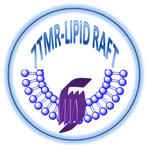Developmental changes in beta2-adrenergic receptor signaling in ventricular myocytes: the role of Gi proteins and caveolae microdomains
| Title | Developmental changes in beta2-adrenergic receptor signaling in ventricular myocytes: the role of Gi proteins and caveolae microdomains |
| Publication Type | Journal Article |
| Year of Publication | 2003 |
| Authors | Rybin, VO, Pak E, Alcott S, Steinberg SF |
| Journal | Mol Pharmacol |
| Volume | 63 |
| Pagination | 1338-48 |
| Date Published | Jun |
| ISBN Number | 0026-895X (Print)0026-895X (Linking) |
| Accession Number | 12761344 |
| Keywords | Animals, Caveolae/*physiology, Cyclic AMP/metabolism, GTP-Binding Protein alpha Subunits, Gi-Go/*physiology, Heart Ventricles/cytology, Heterotrimeric GTP-Binding Proteins/biosynthesis, Muscle Cells/drug effects/*physiology, Myocardium/metabolism, Pertussis Toxin/pharmacology, Rats, Receptors, Adrenergic, beta-2/*physiology, Signal Transduction |
| Abstract | Cardiomyocyte beta2-adrenergic receptors (beta-ARs) provide a source of inotropic support and influence the evolution of heart failure. Recent studies identify distinct mechanisms for beta2-AR actions in neonatal and adult rat cardiomyocytes. This study examines whether ontogenic changes in cardiac beta2-AR actions can be attributed to altered Gi expression or changes in the spatial organization of the beta2-AR complex in membrane subdomains (caveolae). We show that beta2-ARs increase cAMP, calcium, and contractile amplitude in a pertussis toxin (PTX)-insensitive manner in neonatal cardiomyocytes. This is not caused by lack of Gi; Galphai expression is higher in neonatal cardiomyocytes than in those of adult rats. beta2-ARs provide inotropic support without detectably increasing cAMP, in adult cardiomyocytes. This cannot be attributed to dual coupling of beta2-ARs to Gs and Gi, because beta2-ARs do not promote cAMP accumulation in PTX-pretreated adult cardiomyocytes. Spatial segregation of beta2-ARs, Galphas/Galphai, and adenylyl cyclase to distinct membrane subdomains also is not a factor, because all of these proteins copurify in caveolin-3-enriched vesicles isolated from adult cardiomyocytes. However, these studies demonstrate that enzyme-based protocols routinely used to isolate ventricular cardiomyocytes lead to proteolysis of beta-ARs. The functional consequences of this limited beta-AR proteolysis is uncertain, because truncated beta1-ARs promote cAMP accumulation and truncated beta2-ARs provide inotropic support in adult cardiomyocytes. Collectively, these studies indicate that components of the beta2-AR signaling complex compartmentalize to restricted membrane subdomains in adult rat cardiomyocytes. Neither compartmentalization nor changes in Gi expression fully explain the ontogenic changes in beta2-AR responsiveness in the rat ventricle. |
| URL | http://www.ncbi.nlm.nih.gov/entrez/query.fcgi?cmd=Retrieve&db=PubMed&dopt=Citation&list_uids=12761344 |
